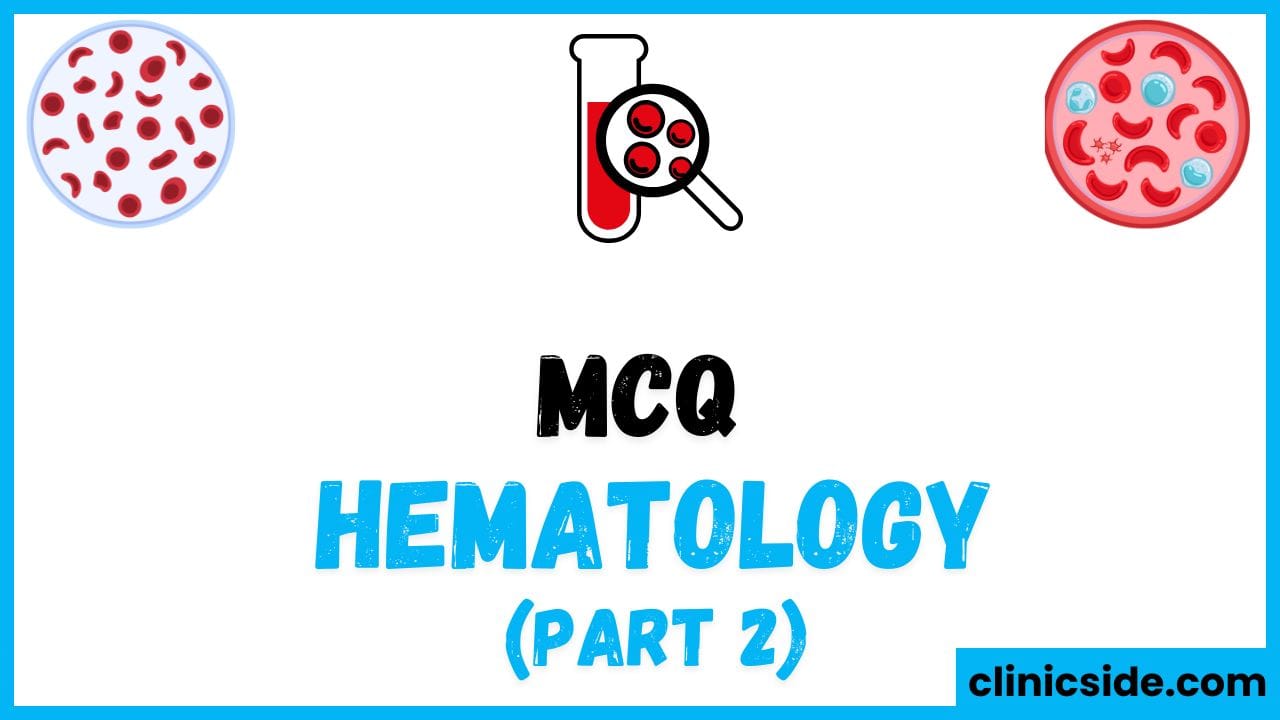Quiz
Available options: 1 to 20
Key Topics in Hematology: A Comprehensive Summary
Genetic Blood Disorders
Genetic conditions affecting red blood cells (RBCs) are a major focus in hematology. Sickle cell disease, caused by mutations in the β-globin gene, results in abnormally shaped RBCs prone to clogging blood vessels and breaking down prematurely. Hereditary spherocytosis, another inherited condition, is characterized by spherical RBCs due to defects in their membranes. Thalassemia, a genetic disorder involving uneven production of globin chains, also contributes to significant anemia in affected individuals.
Understanding Anemia and Its Causes
Anemia can be classified based on its cause and presentation. Iron deficiency anemia, which is globally prevalent, results from a lack of iron, leading to pale, small RBCs. Pernicious anemia arises from a deficiency in Vitamin B12 due to absorption issues, while macrocytic anemia, caused by folate deficiency, involves larger-than-normal RBCs. Hemolytic anemia, which occurs when RBCs are destroyed prematurely, is often linked to autoimmune disorders or enzyme deficiencies like G6PD deficiency.
Morphological Features of RBCs
The shape and size of RBCs provide critical insights into various blood disorders. Crescent-shaped cells are a hallmark of sickle cell disease, while hereditary spherocytosis results in spherical cells. In folate deficiency, the RBCs are unusually large, whereas iron deficiency anemia leads to small, pale cells. A variation in RBC size, indicated by high red cell distribution width (RDW), is often linked to mixed anemia types. These morphological clues are invaluable for diagnosis.
Diagnostic Tools in Hematology
Accurate diagnosis in hematology relies heavily on laboratory tests. The mean corpuscular volume (MCV) is a key metric that categorizes anemia into microcytic, normocytic, or macrocytic types. Blood smear analysis can reveal features like hypersegmented neutrophils in megaloblastic anemia. Supravital stains are used to detect reticulocytes, reflecting bone marrow activity. These tools are fundamental for identifying and understanding hematologic conditions.
Bone Marrow Activity and Reticulocyte Count
The reticulocyte count serves as an indicator of bone marrow function. Elevated reticulocyte levels suggest active RBC production, often in response to anemia or blood loss. In contrast, low counts can indicate bone marrow failure, as seen in aplastic anemia, which is characterized by reduced blood cell production across all types. Understanding reticulocyte levels helps differentiate between production-related and destruction-related anemias.
Role of Hemoglobin and Iron in Blood Health
Hemoglobin, the primary protein in RBCs, is essential for oxygen transport. Iron is crucial for hemoglobin synthesis and is transported in the body by transferrin. A deficiency in iron, even when dietary intake is adequate, can lead to anemia if iron transport or storage is impaired. This highlights the importance of maintaining proper iron metabolism for healthy blood function.
Vitamin Deficiencies Leading to Anemia
Nutritional deficiencies play a significant role in anemia. Vitamin B12 and folate are essential for DNA synthesis and RBC maturation. A deficiency in these nutrients leads to macrocytic anemia, with larger-than-normal RBCs and hypersegmented neutrophils. Pernicious anemia occurs when the body cannot absorb Vitamin B12, while inadequate dietary intake of folate can result in megaloblastic anemia. These deficiencies underline the importance of a balanced diet for blood health.
Enzymatic and Autoimmune Blood Disorders
Enzyme deficiencies and autoimmune conditions are significant contributors to blood disorders. G6PD deficiency, a common enzyme disorder, can cause oxidative damage to RBCs during stress, leading to hemolysis. Autoimmune hemolytic anemia occurs when the immune system mistakenly destroys RBCs, reducing their lifespan. These conditions require precise diagnosis and tailored treatment strategies.
Iron Transport and Storage Mechanisms
Transferrin, a protein responsible for transporting iron, ensures that it reaches the bone marrow for hemoglobin synthesis. Disruptions in iron transport can lead to anemia, emphasizing the role of transferrin in maintaining iron balance within the body. Proper management of iron metabolism is critical for preventing and treating anemia.
Bone Marrow Disorders
Disorders of the bone marrow, such as aplastic anemia, result in reduced production of all blood cells. This condition, marked by a low blood cell count and underactive bone marrow, is life-threatening and requires early intervention. Bone marrow health is fundamental to overall hematologic well-being.
Conclusion
This summary of hematology highlights the complexity of blood disorders, from genetic conditions like sickle cell anemia to nutritional deficiencies and diagnostic techniques. Understanding the interplay of morphology, nutrition, and diagnostic tools is essential for effective management and treatment of these conditions. By addressing underlying causes and improving diagnostic accuracy, clinicians can better manage hematologic health and improve patient outcomes.





